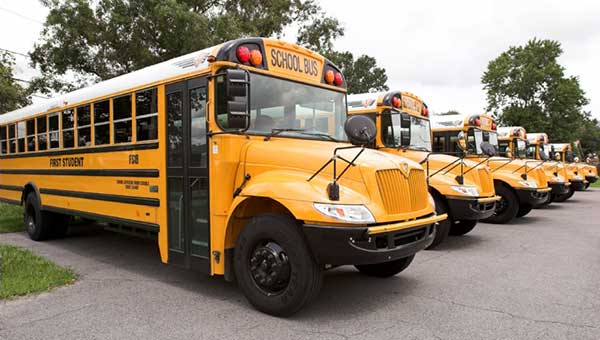SPONSORED CONTENT
 Whether you’re coordinating a wedding, conference, or group outing, the logistics of arranging ground transportation for events of all sizes can be tricky. There’s a lot to consider: budget, headcount, guest needs and so on. No matter what the event, you want to be sure the company you hire provides safe, comfortable and smooth transportation. Check out these tips for booking exceptional group transportation within your budget.
Whether you’re coordinating a wedding, conference, or group outing, the logistics of arranging ground transportation for events of all sizes can be tricky. There’s a lot to consider: budget, headcount, guest needs and so on. No matter what the event, you want to be sure the company you hire provides safe, comfortable and smooth transportation. Check out these tips for booking exceptional group transportation within your budget.
Overestimate the Headcount
In a perfect world, you’d always have the final headcount before booking event transportation. But when it comes to event planning, there are multiple factors that affect whether you can provide an accurate headcount so early in the process. A corporate outing might have a more solid attendance estimate further in advance, while a wedding’s RSVP deadline might mean you won’t have final numbers until two weeks before the event. Whatever the situation, it’s always best to overestimate the headcount and revise it once the numbers are finalized. At the end of the day, you want to make sure no guest is left without a seat on the bus.
Determine the Company’s Capacity
Of course, the number of guests will determine the number of vehicles needed. That’s why it’s so important to consider the transportation company’s fleet size, as it gives you an idea of their ability to provide the appropriate amount of vehicles.
If you’re booking for an event that will require 50 buses, you have to be certain the operator you choose can provide that. It’s also important to know whether they can supply alternate or additional vehicles if necessary. Larger fleets are able to plan for contingencies—like maintenance issues and sudden jumps in attendance—that smaller operators just can’t handle. With a large fleet, you can rest a little bit easier knowing there’s flexibility in vehicle numbers should any last minute issues arise.
Identify Guest Needs

Identify Guest Needs
Knowing your attendees and whether one or more of them will require special accommodations is critical. For example, if any guests are unable to board using steps, you’ll want to make sure the transportation company offers ADA-compliant vehicles.
Be Clear About the Schedule
Once you select a transportation provider, you’ll want to ensure they understand your group’s schedule. For some groups, a pick-up and drop-off time is all that needs to be scheduled. For others, like multi-location events, a customized approach will be necessary. For example, a corporate conference operates on a firm schedule, but a pub-crawl runs on a more fluid timetable. Knowing what need the event revolves around allows the transportation company to determine how many drivers will be required, and ultimately helps them provide the best transportation solution.
Confirm, Confirm, Confirm
Once you’ve booked your group’s transportation, be sure to get confirmation in writing. It’s also a good idea to verbally confirm two to four days before the event, just to ensure that everything from routing and scheduling to the number of vehicles needed is in order.
In Conclusion
Booking group transportation for an event of any size can be challenging. By being clear about schedule, budget and the group’s needs, you can ensure the process is as smooth as possible. At the end of the day, the most important thing is that guests receive a safe, enjoyable ride to and from their event.
Timothy Moline is senior director, business development, for First Student Inc. With more than 25 years of experience in the transportation industry, he is an experienced sales, marketing and business development executive. He currently heads the charter division of First Student Inc., leading sales and operational employees across North America. His team partners with large and small customers to provide a turnkey solution to group transportation needs.

